I often ask our customers how they measure how well search is performing on their site. I’ve heard a range of answers, but broadly speaking they fall into these categories:
We don’t. We measure traditional metrics like site traffic, conversion rate, and average order value, but we don’t attribute that to search.
We look at the conversion rate for sessions in which a shopper searches, and compare this with sessions where a shopper doesn’t use the site search.
We use anecdotal evidence. We take a look at a handful of the top search results, and if they look sensible to us, then we assume search is working well.
The question usually gets fired back to me. How should they be measuring their search performance?
My answer is always the same: it depends on what they are trying to achieve.
Key Performance Indicators (KPIs) are purely an indication as to whether you are achieving your goals. If you have a different goal, you should change your KPIs to match the goal you are trying to achieve.
The KPIs that should always be tracked
There are some KPIs that I recommend all customers track, which gives the most reliable depiction of how well search is performing. These are:
1. Search conversion rate: This is a measure of what percentage of search queries lead directly to an order of a product in that results set. It’s the best indicator of how relevant the search results to the shopper.
2. Revenue per search: This is a measure of how much shoppers are spending per search query. For companies that are trying to optimize for revenue, not conversion, this is a good alternative to the search conversion rate.
3. Search clickthrough rate: Similar to the ‘search conversion rate’, this is a measure of what percentage of search queries lead directly to a shopper viewing a product page.
The KPIs that should sometimes be tracked
Our customers have different goals. Let’s take two example companies:
1. The Adaptor: A traditional company keeping up with the demands of consumers by building a complementary eCommerce store.
2. The Influencers: A company, typically fashion or cosmetics, driving up brand loyalty through delightful user experience.
These companies have different goals, and therefore their KPIs should not be the same.
Let’s take the example of the Adapter. Their goal is to provide the same online experience as they see in the store. They will be very wary of losing existing customers through poor user experience. The KPIs I would recommend that they monitor are:
Null search rate. How many customers are searching for something that they would expect from this company, but aren’t getting results?
Search bounce rate: How many customers are leaving the site, frustrated with their search results?
The Influencers aren’t too concerned about online conversion. While their ultimate goal is to get shoppers to buy, it’s far more important that their shoppers are loyal and engaged with their site, and are likely to return. They should be worried about:
1.Product views per search: We want shoppers to browse and view products that they are interested in.
2. Time after search: We want shoppers to be engaged with the search results.
The red herrings
A word of caution about the following KPIs, which I find is common across our customers for tracking search performance.
-
Site conversion rate. Site conversion rate is driven by a huge number of factors, only one of which is search. We have observed a decreasing site conversion rate even when our search performance at the stable, even increasing. Focus on the search conversion rate to get a measure of how search is a contribution towards your overall conversion.
-
Revenue attributed to search. If the percentage of your revenue that is attributed to search is going up or down, it doesn’t necessarily mean that search performance is improving or reducing. It can be down to a shift in consumer behavior, or an improvement of your site navigation.
-
Average click position. A high average click position indicates that the top results are most relevant. However, a low average click position can indicate a large number of relevant results, that shoppers are happy to engage with.
GroupBy recently released Search Analytics - easy, intuitive analytics dashboards to help merchandisers make better decisions around their shoppers.
For more information, get in touch with GroupBy at [email protected]


